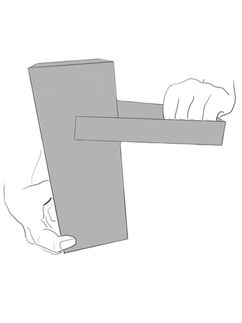Roshni
This project was done as part of the academic subject 'Design and Society' in November 2020. It explores designing for change, taking into consideration behavioral sciences in the domain of social design.
Introduction
My first foray into social design made me think beyond just the product, as the product itself is designed to bring about a certain change over a period of time. It aims to transform the existing ideology around what children are entitled to and what can be termed as their basic needs. The product, hence, is designed to bring about change in the thinking of not only the parents but also the children, focusing particularly on the community residing in Urban Slums.
Understanding the Context
Research
Primary
Research
Resident
NGO
Volunteer
Secondary
Research
UN
reports
NGO
Initiatives
Other articles
Aim of the Research
Understand the pain points through intended user and outside interactor.
-
Understand the context and definition of the user's environment
-
Understand the scale of the problem
-
Identify other problem areas
Urban Slums
Cramped housing - light does not reach the ground or inside houses; children studying in dim light inside the house.
Primary Research
Interview, Resident of Urban Slum
Name: Seema
Occupation: House Help
Husband's Occupation: Contract Worker
No. of Children: 3
Place of Residence: Mhatoba Vasti, Kothrud, Pune, Maharashtra
House Construction Type: Permanent
Toilet: Available, unlit, shared with 12 other members
Amenities:

Interview, NGO Volunteer
Name: Devshri Joshi
NGO: Door Stop School
Role: Teacher (Remote)
Observations during Remote Teaching
-
Most of the kids study outdoors, beneath a street lamp. Usually, one in 5-6 families has a smartphone.
-
When studying indoors, the tutor can hardly see the child's face, suggesting insufficient lighting and/ or cost cutting.
-
A lot of disturbance in the background is observed, restraining the child from focusing on the task at hand. This is due to: a single source of light, casting huge shadows in the one room houses, multiple members going about their activities in a constrained space.
-
This overall, is a non-conducive environment for the holistic development of children.

Why is there a need for a personal lamp?
Indoor
-
Not enough natural light due to houses being constructed very close to each other
-
Cost restriction - hence no more than 2 connections are affordable
-
Unlit washroom
-
Supply of electricity - maybe/ maybe not
Outdoor
-
Street lights located at a distance from each other, hence unlit patches on the street
-
Children/ women movement restricted
-
Irregular supply of electricity



Explorations, Ideations and Prototypes

A concept
A suggested product concept for the identified product design brief. This can be further refined according to manufacturing requirements and testing with the users.
Use it in the way best suited for the task!
Feedback from the Community





















